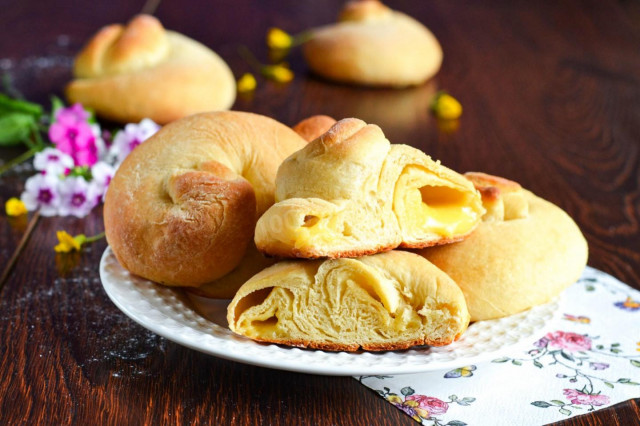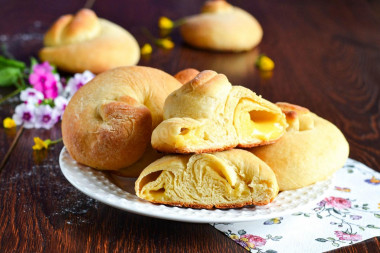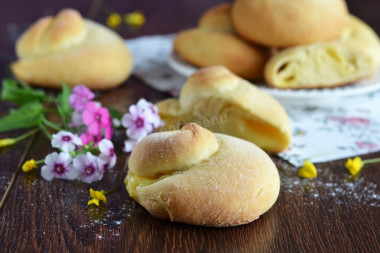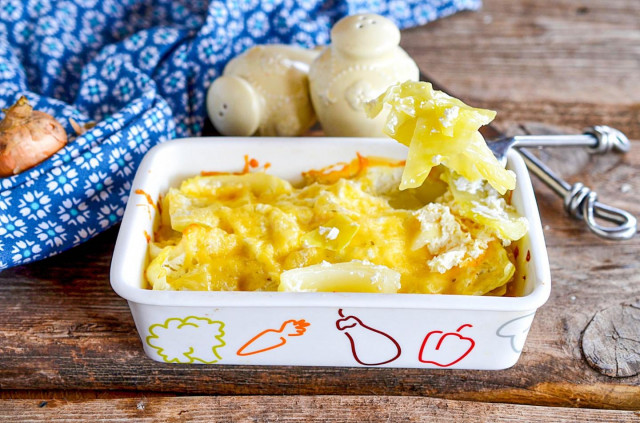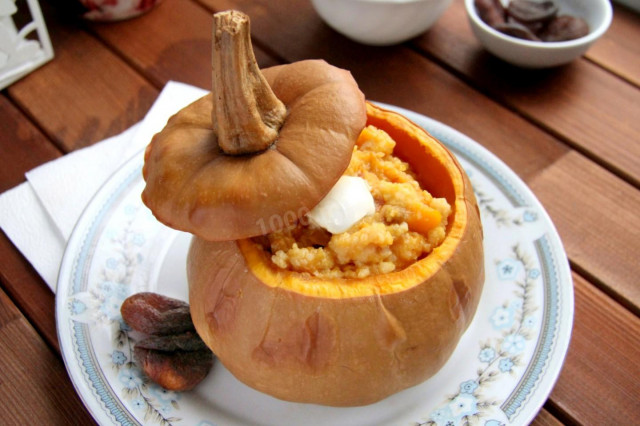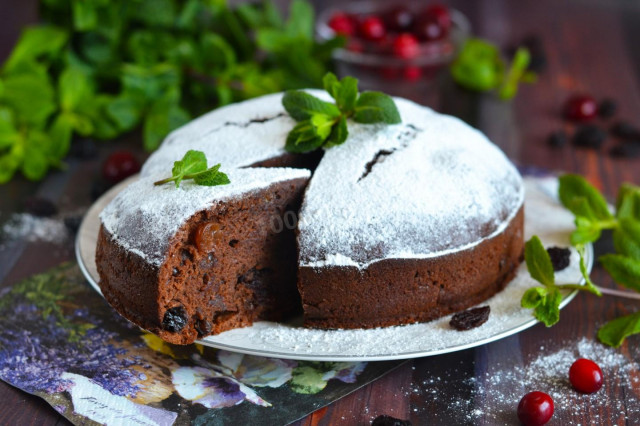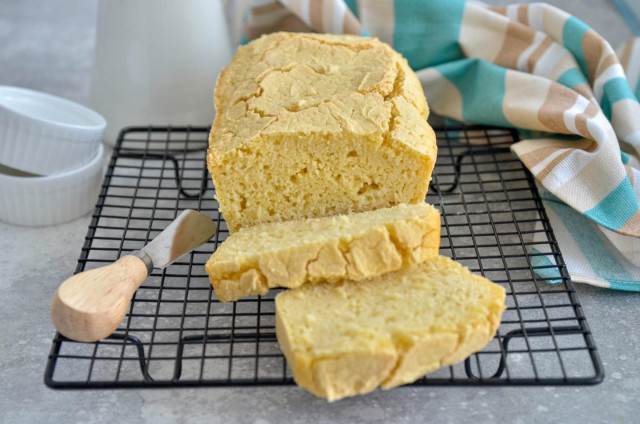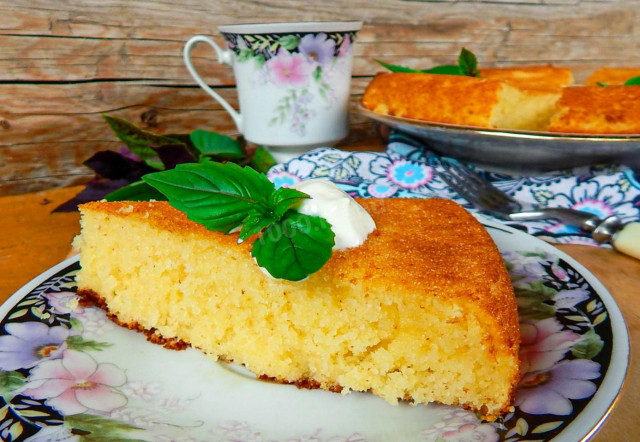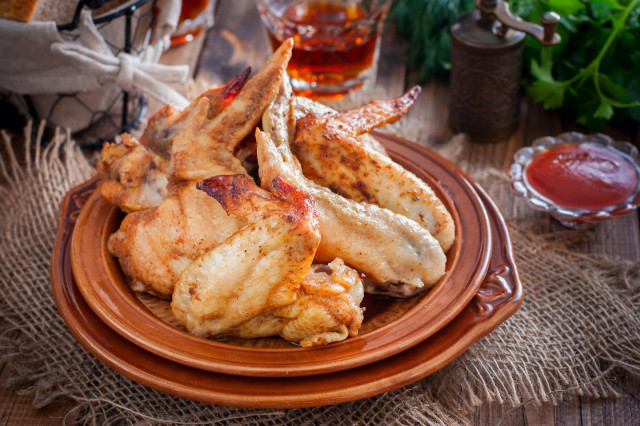Composition / ingredients
Step-by-step cooking
Step 1:
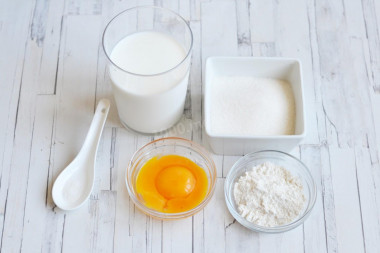
How to make yeast rolls with custard? Prepare all the necessary ingredients for the custard. You can replace vanilla sugar with vanilla, but you need to take it on the tip of a knife, otherwise the cream will be bitter (read the instructions on the package). Due to the fact that the cream needs a lot of time to cool down, it is better to cook it first. I usually prepare the cream in advance, in the evening, and in the morning I put the dough on the buns.
Step 2:
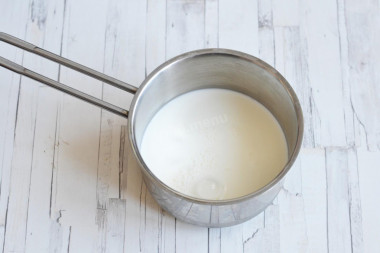
Pour milk into a saucepan, put on medium heat and bring to a boil, but do not boil.
Step 3:
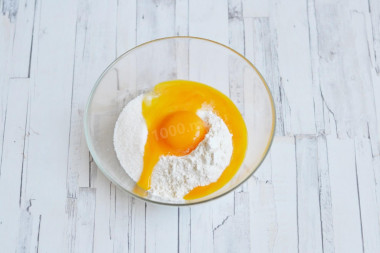
In a bowl, combine the yolks, sugar and vanilla sugar.
Step 4:
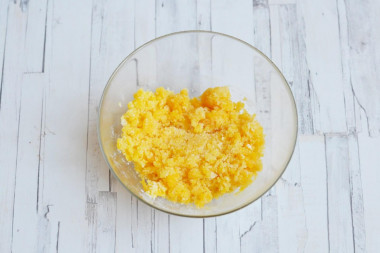
Thoroughly rub the yolks with sugar, otherwise then the yolk pieces will come across in the cream.
Step 5:
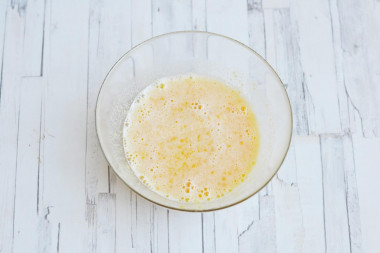
With constant stirring, pour a little hot milk into the crushed yolks. Stir until the sugar dissolves.
Step 6:
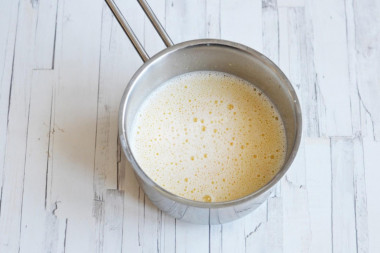
Pour the resulting mixture back into the saucepan and put it on a slow fire.
Step 7:
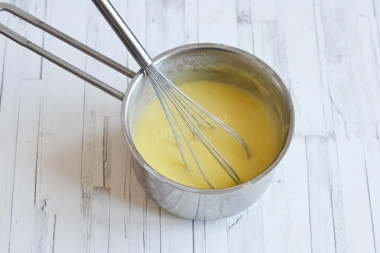
Cook the cream, stirring constantly, until thickened. The cream should be so thick that the trace from the corolla is not immediately tightened. During cooling, the cream will thicken even more. The thicker the cream, the tastier the buns will turn out, because the filling will not spread.
Step 8:
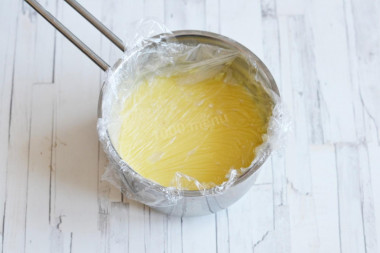
Cover the finished custard with cling film "in contact" (seal the edges of the dishes tightly, but so that the film does not come into contact with the surface of the cream) and put it in a cool place, but not in the refrigerator. I put it on the balcony. You can't put a hot pot in the refrigerator - you can ruin the equipment. First, cool the cream at room temperature, then put it in the cold.
Step 9:
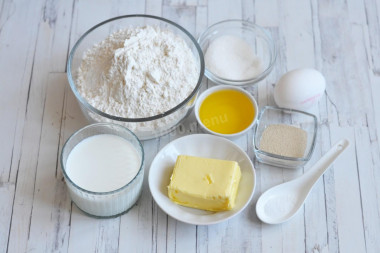
While the cream is cooling, measure out all the necessary ingredients for the dough. The butter should be at room temperature, so take it out of the refrigerator in advance (2-3 hours in advance; I take it out in the evening).
Step 10:
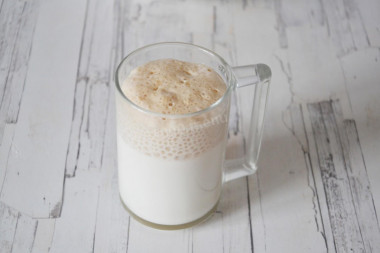
Heat the milk to 37-40 °C. In a separate container, pour 1 tsp sugar, 1 tsp flour and dry yeast. Pour in 50 ml of warm milk, mix and leave for 10-15 minutes until a fluffy cap appears. It indicates that the yeast is of high quality and they have been activated.
Step 11:
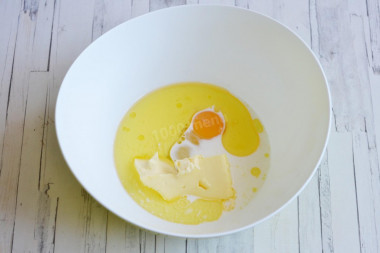
In a deep bowl, mix the remaining warm milk, egg, soft butter, vegetable oil and salt. Mix everything with a whisk.
Step 12:
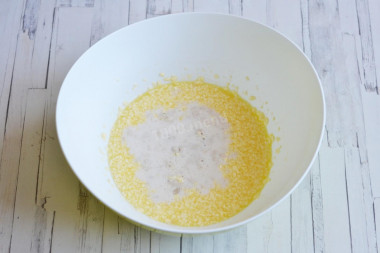
Pour in the yeast and mix again.
Step 13:
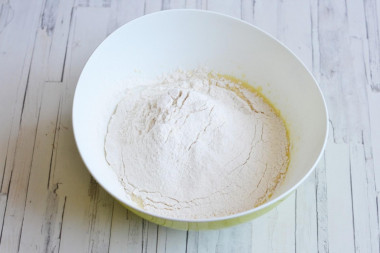
Sift the flour into a bowl with yeast. Please note that you may take more or less flour than me. Therefore, focus on the consistency of the dough.
Step 14:
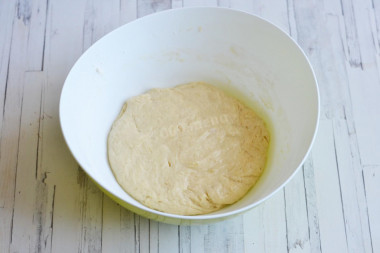
Knead the dough. It should be soft, homogeneous, not sticky.
Step 15:
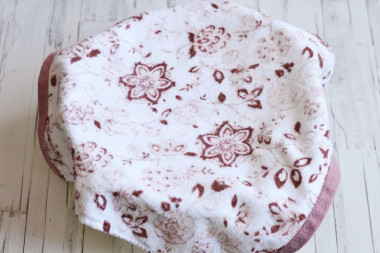
Cover the bowl with a towel and leave the dough to rise in a warm place for 1-1.5 hours. If the room is not warm enough and the dough does not rise, you can slightly heat the oven to 30-40 ° C. Then turn off and put a bowl of dough in it. After 50 minutes, knead the dough that has come up and set it to rise again.
Step 16:
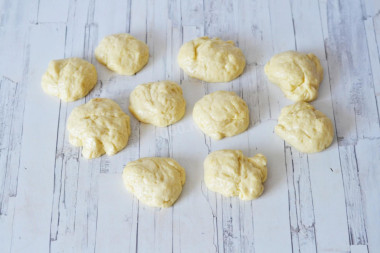
Knead the dough that has come up and divide it into 9-10 identical pieces.
Step 17:
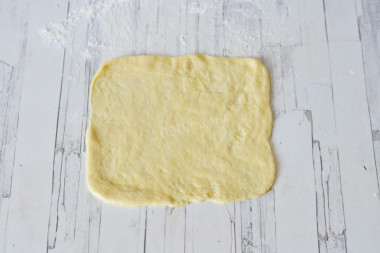
Roll out each piece on a floured table into an even square. The dough is extremely pliable and tender - it is a pleasure to work with it.
Step 18:
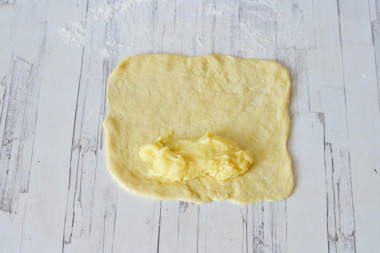
At the end of each square, put 1-2 tablespoons of custard. Pay attention to the photo: the cream should not reach the edges so that it is possible to "seal" it in the dough. Roll the dough into rolls so that the cream is inside. If you look at the photo, then we start twisting from the bottom edge to the top, i.e. from the edge where the cream lies.
Step 19:
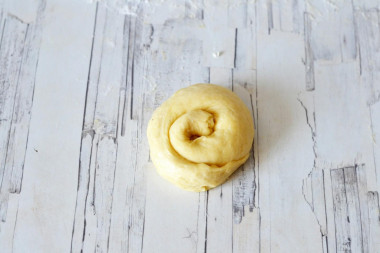
And roll the rolls carefully into a snail.
Step 20:
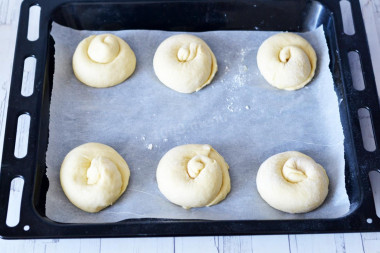
Place the resulting rolls on a baking sheet lined with parchment and leave to rise for 10 minutes. Bake the buns in a preheated 180 °C oven for about 15 minutes. If the oven has a convection mode, then turn it on. Determine the exact time and temperature of baking according to your oven.
Step 21:
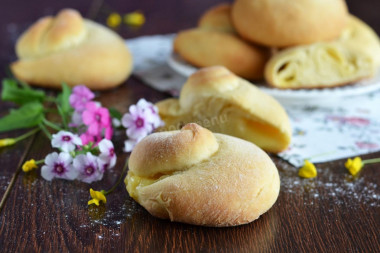
Bon appetit!
Keep the buns in a closed bag. Before using them, it is better to warm them up a little in the microwave or in the oven. Because they are much tastier in a warm form.
Be prepared for the fact that flour may need more or less than indicated in the recipe. Focus not on the amount of flour, but on the desired consistency of the dough. Read a lot of useful information about flour and its properties in this article!
Keep in mind that everyone's ovens are different. The temperature and cooking time may differ from those specified in the recipe. To make any baked dish successful, use useful information in this article !
Caloric content of the products possible in the composition of the dish
- Whole cow's milk - 68 kcal/100g
- Milk 3.5% fat content - 64 kcal/100g
- Milk 3.2% fat content - 60 kcal/100g
- Milk 1.5% fat content - 47 kcal/100g
- Concentrated milk 7.5% fat content - 140 kcal/100g
- Milk 2.5% fat content - 54 kcal/100g
- Chicken egg - 157 kcal/100g
- Egg white - 45 kcal/100g
- Egg powder - 542 kcal/100g
- Egg yolk - 352 kcal/100g
- Ostrich egg - 118 kcal/100g
- Whole durum wheat flour fortified - 333 kcal/100g
- Whole durum wheat flour, universal - 364 kcal/100g
- Flour krupchatka - 348 kcal/100g
- Flour - 325 kcal/100g
- Granulated sugar - 398 kcal/100g
- Sugar - 398 kcal/100g
- Butter 82% - 734 kcal/100g
- Amateur unsalted butter - 709 kcal/100g
- Unsalted peasant butter - 661 kcal/100g
- Peasant salted butter - 652 kcal/100g
- Melted butter - 869 kcal/100g
- Vegetable oil - 873 kcal/100g
- Salt - 0 kcal/100g
- Egg yolks - 352 kcal/100g
- Vanilla sugar - 379 kcal/100g
- Dry yeast - 410 kcal/100g

